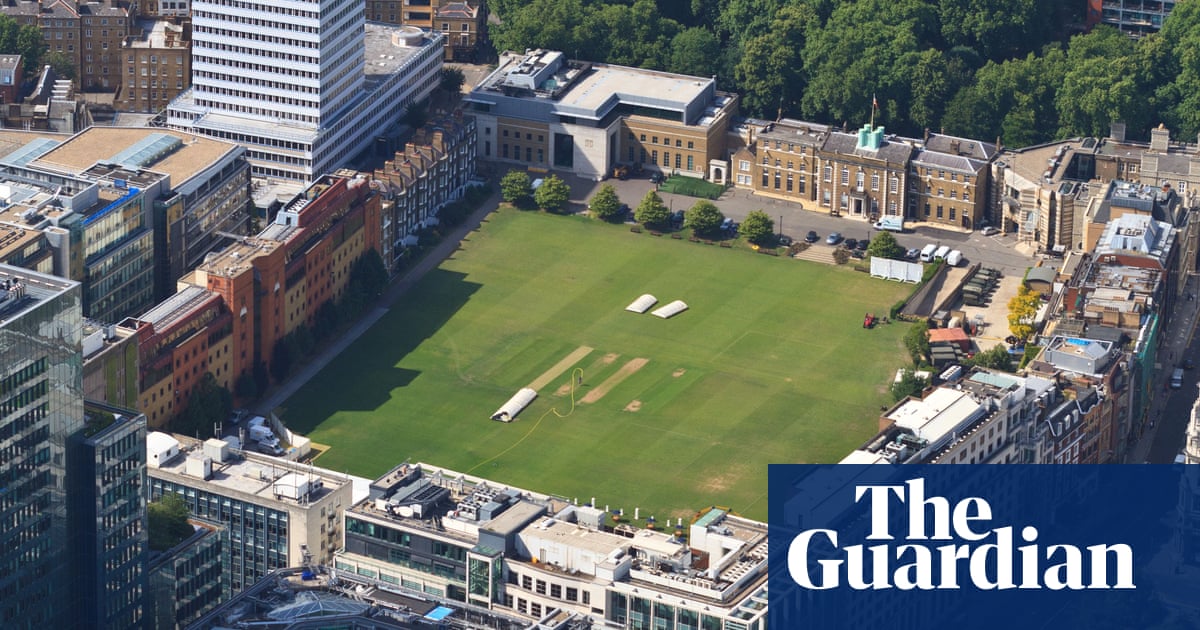You climb the stairs at Old Street Station, hauling a cumbersome cricket bag into the East London sunshine. The hipsters and creatives barely give you a cursory glance, presumably unaware of what lies just a five-minute walk away. Take the left bend on Old Street, veer down City Road, past some corner shops and the Bunhill Fields burial grounds where William Blake now rests, and there, through a black iron gate, you find an oasis.
Surrounded on three sides by towering city buildings is the Honourable Artillery Company (HAC)CricketClub. The manicured pitches and lush green outfield stand out like a velvet rug draped over cold concrete. The pavilion is no mere clubhouse. It is a museum chronicling more than 300 years of history including the first recorded cricket match here in 1725, sweeping across three centuries of imperialism, conflict and sport.
“It’s unlike any cricket ground in the UK, probably the world,” beams Edward Haines, the club’s first XI captain and a former lance lance sergeant in the Territorial Army’s Artillery Reconnaissance regiment. “You never get tired of seeing people come across the ground for the first time. The look on their faces tells you how special this place is and how much history it holds.”
The ground boasts a number of cricketing milestones. On 2 June 1744 the Duke of Richmond assembled a team from Kent to take on a local London side. Instructions for attending the game were clear: “All persons that go out of the Ground during the match and intend to return again, are desired to take a Ticket, otherwise they will not be readmitted.” This marks the earliest known instance of punters needing a ticket to watch a cricket match. Kent’s 55-run victory is recorded in the sport’s oldest surviving scorecard.
The game’s popularity was clear. Two weeks later, when the Duke of Dorset arrived for a fixture against All England in a contest billed as “the greatest cricket match ever known”, spectators were charged a tuppence (two pence) to attend, the first time anyone had to pay to watch a game. Despite a “great disorder”, around 8,000 people were wedged around the ground and kept off the field under threat of a leather lash.
“We’re lucky if we get a dozen spectators watching us today,” says Haines, who has just completed eight matches in nine days in celebration of the club’s anniversary. “When I’m skipper, I’m too busy thinking about bowling changes and how to get the next wicket. But when I do stop and allow myself to contemplate the history of the place, it is quite extraordinary.”
The ground beneath Haines’ feet was once trodden by Edward “Lumpy” Stevens, who earned his nickname thanks to his ability to locate uneven bumps on the pitch with unerringly accurate underarm bowling. In a game in May 1775, the man regarded as cricket’s first great bowler proved unplayable to Hambledon’s John Small. Three times Stevens beat Small’s defence and bowled him through the gate. That would have been the end of things but for the absence of a middle stump. Following Small’s victory, regarded as an injustice by witnesses, the use of three stumps began to be commonplace before their use was codified in the laws of the game in 1785.
Cricket at the HAC was under threat towards the end of the 18th century as a result of unruly behaviour and clashes with military activities. It was only in 1846 – thanks to a sanction from HAC’s Captain-General, Prince Albert – that the sport was once again permitted “subject to regulation for ensuring the order and discipline of the Corps.”
Cricket has long been entangled with Britain’s colonial project. It was soldiers carrying bibles, bullets and bats who spread the game around the world. Matches were held in garrisons from Jamaica to Rawalpindi, often reinforcing imperial hierarchies. The sport was as much a performance of Englishness as it was a weapon of soft power.
Those imperial echoes remain visible at the HAC. Several large cannons look out over the field. Inside the pavilion are plaques honouring the deeds of British troops in the name of empire. The HAC’s first overseas deployment came during the Second Boer War in South Africa, a brutal imperial campaign in which six of its members were killed, as well as two Test cricketers: John Ferris of Australia and Frank Milligan of England.
Sign up toThe Spin
Subscribe to our cricket newsletter for our writers' thoughts on the biggest stories and a review of the week’s action
after newsletter promotion
Cricket at the HAC survived an enforced hiatus during the First World War when play was suspended. The pitch transformed into a mobile anti-aircraft station while the outfield was dug up for trench warfare training. Play resumed after the Armistice and continued through the second world war.
The HAC exemplifies cricket’s ability to endure upheaval and also the sport’s adaptability. “We now have a commonwealth of players,” says Haines, proud of his teammates from Africa, Asia and the Caribbean. “We don’t shy away from any uncomfortable strands of our history but we choose to celebrate what we have now and where we’ve come from. We’ve recruited people from around the world to the regiment and the cricket club has played a key role in that.”
Even in the shadow of empire, a cricket ground in East London can still be a site of joy, escape, and community. It may have once been a proving ground for soldiers. Now, it’s a stage for something far gentler. If nothing else, a game here should be on every player’s bucket list.
This is an extract from the Guardian’s weekly cricket email, The Spin.To subscribe, just visit this page and follow the instructions.
